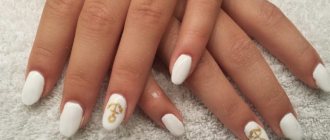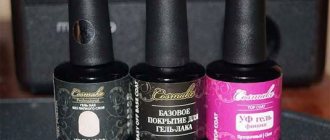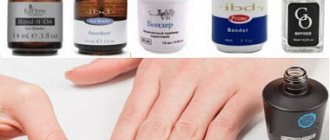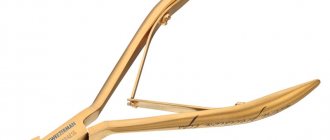A magic wand really does exist, at least in manicure. This is a buff, as everyone affectionately calls it, it is vital if you want to have beautiful, well-groomed hands. A good manicure without a buff is simply impossible; this universal file performs many functions in manicure for natural and extended nails. The right buff and using it according to all the rules will prepare your nails for any luxurious coating. Why do you need a nail buffer, why is it so good, and why should it be in any fashionista’s manicure set? Let’s find out right now.
Using the buff
Application

Buff from English buff, polish - a special file in the form of a three-dimensional rectangular block, each face of which has its own abrasiveness.
The main functions of this tool are grinding and polishing natural and extended nail plates, from which it removes irregularities and minor flaws. A polished, smooth surface of the nail improves adhesion between the artificial and natural plates and allows for better placement of material during the process of extension or pigmentation. You can also use a buff to remove rough skin from the periungual ridges, hangnails, cuticles and seal detachments of the plate. It is for this important stage in creating a manicure that a buff is used, both in the salon and at home.
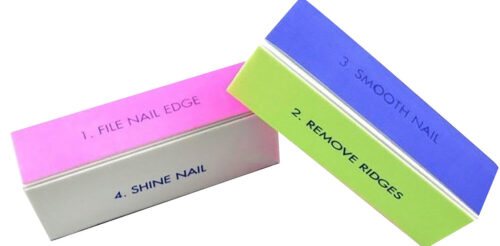
It is convenient to carry the Bafik in your purse so that this indispensable tool, which solves so many problems, is always at hand. It is customary to number the four working surfaces of the tool so as not to confuse what actions can be performed by each of them. At home, you can replace several nail files with this universal buff:
- the first edge creates the shape of the nail, removes the length;
- the second edge removes unevenness, roughness, and can remove burrs;
- the third face polishes, removes minor imperfections and flaws;
- fourth - polishes the nail to a shiny state.
Reviews
Elena, 45 years old: Buff No. 2 Stella products is designed to smooth out roughness. It doesn’t really cut anything down, but it suits me perfectly for the extended length. If I scratch an acrylic plate during homework, the block copes with the problem quickly, because it has 4 sides. This grinder has been in use for many years now, but I can’t imagine what to replace it with.
Elizaveta, 18 years old: I take great care of my nails, so I do my own trimmed manicure and polish it with a Zinger stone. I found a significant drawback - the manufacturer was too lazy to indicate the abrasiveness of the sides, so all that remains is to compare the sensations intuitively, which does not have the best effect on the quality of the treated surface.
Kamila, 29 years old: I only use Baf for my toenails, because the nail plates on my hands are very thin and constantly peel. I'm afraid that after sanding they will peel off even more. As for my toenails, after sanding I cover them with a clear polish and they look gorgeous, like in a TV commercial.
Kinds
Buffers, which have the shape of a bar 6-10 centimeters long, also include two more types of special files:
- Grinder has an elongated shape with a wide working surface. More often used in salon settings, the abrasiveness of the sides is suitable for natural and extended nails;
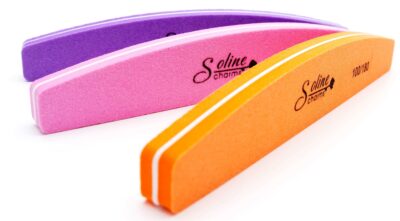
- The polisher has a similar shape, but the working surface is smooth to the touch. It is also convenient for sealing detachments.
Product Features
Not every representative of the fair sex can afford frequent visits to beauty salons. But there is a way out of this situation. You can do a manicure at home.
To do this you will need a base for gel polish and some tools. The base or base is a substance that securely attaches the polish to the nail. It can be purchased in a store or ordered online.
The base is also needed to protect the nails from the effects of chemical elements contained in the varnish. With it, even the brightest dyes included in the gel polish will not be able to absorb into the surface of your nails. In addition, this miraculous product will protect them from yellowing, damage to the structure and fragility.
A good base contains some medicinal components that can not only preserve the original appearance of the nail plate, but also have a healing effect. Such options contain proteins, keratin, calcium and vitamins. In addition, such a base may contain microscopic elements of silk. Remember: a high-quality polymerized base should well align the nail plates before applying varnish and serve as reliable protection for the tips of the nails (if you accidentally hit a hard object with your finger, the varnish will not be damaged).
Abrasiveness

The abrasiveness of the buffer determines the hardness of the sides and shows for what type of nails it is best to use it and what functions it performs. Depending on the abrasiveness index, there is the following classification:
- 60-80 grit – suitable for pedicure and working with artificial nails;
- 100-150 grit – for polishing nails during pedicure, for correcting the surface of an artificial plate before applying gel polish;
- 150-240 grit – to give the desired length and shape to natural nails, for polishing extended nails;
- 300 grit and more - used for delicate polishing of natural nails to a natural shine.
Marking different sides of buffs
Buf, for ease of use, has special side markings. Thanks to this, the master quickly understands what he needs to do while working.
- Side 1 is a standard file that allows you to shorten your nails or give them the desired shape.
- Side 2 allows you to eliminate burrs or uneven nails.
- Side 3 sands down uneven surfaces.
- Side 4 is used to add shine to nails.
Masters apply all aspects of the buff.
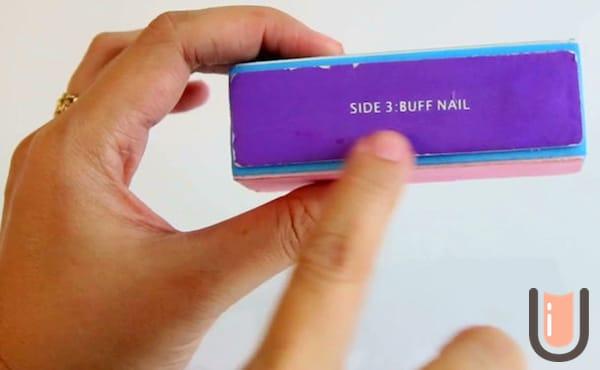
What materials?
The working surface of the buff differs not only in abrasiveness, but also in the material from which the sides of the tool are made. Depending on this, buffs are of the following types:
- Polyethylene foam or plastic are the most affordable, durable, and therefore the most popular. Can be sterilized;

- Silicone - durable, inexpensive, easy to clean and sterilize;
- Suede - average quality, more expensive than plastic and silicone, cannot be sterilely processed;
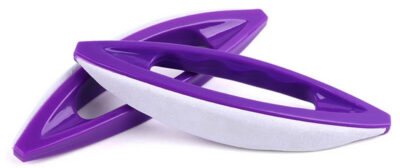
- Fabric ones are of high quality, suitable for working with natural nails, flexible, elastic, impossible to disinfect. Silk coating is considered the most expensive.
The base of the buffers is also made of various materials. It can be fabrics, wood, plastic. The shape of the buffers is not very different. Basically these are rectangular bars with two or four working surfaces. Sometimes there are buffs in the form of a boomerang, small square bars.
Suede files
A more expensive version of the tools that are used in the art of nail art. They cannot be disinfected or sterilized.
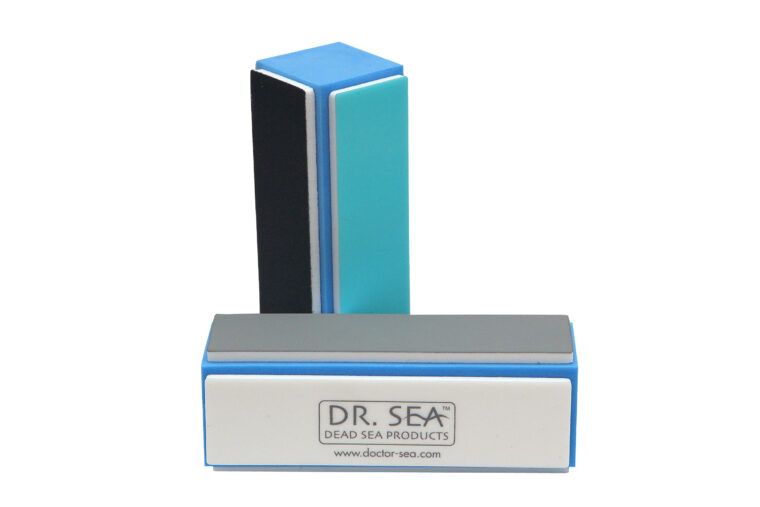
Fabric nail files also do not tolerate cleaning, disinfection and sterilization, quickly losing their shape and properties. For this reason, such tools are used exclusively for personal purposes.

Terms of use
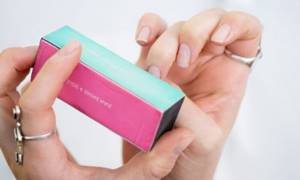
To avoid injury to the structure of the natural nail, damage to the surface of the artificial plate and to obtain a high-quality manicure, you must adhere to a few simple rules when working with a buffer:
- Choose the right side of the buff, with the required abrasiveness.
- You need to apply the tool to the nail plate with the wide side so that the surface of the buff covers as much of the surface of the nail as possible.
- Long movements of the buff along the nail surface should be directed in one direction, for example, from right to left or from the cuticle area to the free edge. Chaotic movements are not desirable, and there should not be a lot of them.
- It is recommended to use the buffer no more than once a week so as not to thin the natural plate.
- Once or twice a month you need to rub nourishing oil into the nail as a buff. This is done to strengthen and seal.
- It is necessary to periodically reprocess the tool.
Nail lamination - procedure and review of products
The surface of the nail is sanded before applying both regular nail polish and gel polish. Therefore, you should think about purchasing a high-quality tool that will not harm your nails or ruin your manicure.
The process of proper grinding and polishing using a buffer can be seen in the video
What can be replaced
The low abrasiveness buff will be replaced by a similar file. But the highly abrasive buffer used for polishing natural nails is difficult to replace with anything.
If you are using the polishing block only to remove the remains of the pterygium, you can replace it with a soft file in the shape of a semicircle or boomerang. With this tool it will be easy to process the nail plate in the cuticle area.
To trim the side surfaces of the nails, instead of a buff, it is more convenient to use small narrow files.
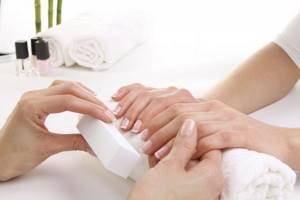
In conclusion, it should be said that even if you use a buff to treat only your own nails, it needs to be disinfected periodically. First you need to clean off the remaining sawdust from the surface, and then place it in an ultraviolet disinfectant. Most buffs cannot be treated with liquid disinfectants.
Processing and disinfection
Like any other manicure equipment that comes into contact with the skin when treating hands and nails, buffers also need to be treated periodically. As we have already found out, not all buffs can be sterilized and disinfected. Therefore, it is better to use fabric and suede instruments personally, exclusively at home.
Plastic and silicone tools are easy to process. In salons, ultraviolet bactericidal lamps and sterilizers are used for this purpose. At home, it is enough to wash the buffs in a soapy solution. Fabric buffers that allow water to pass through can be rinsed in any disinfectant solution, but there is a high probability that the functionality of the instrument will become worse. Typically, fabric buffs are replaced after a certain time.
How and with what to disinfect, sterilize and clean manicure instruments
Professional techniques
To use this multifunctional tool quickly and conveniently, you need to apply some professional techniques and follow a number of rules. It is necessary to apply the wide side of the polishing bar to the edge of the finger so that the working surface covers as much of the nail area as possible.
You need to try to make fewer movements. Otherwise, you can damage the nail plate. You should work with a manicure buff easily, and try not to perform unnecessary manipulations.
You need to file your nails left and right across the width of your finger. The direction cannot be changed. To ensure uniform surface treatment, the movement is performed in one direction.
When choosing a nail buff, you should give preference to natural suede, since a tool made from this material is soft. He polishes carefully. But if a master works with such a bar in a nail salon, this should alert you. The fact is that it is problematic to disinfect a suede buff.
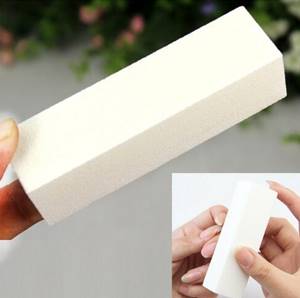
How to choose
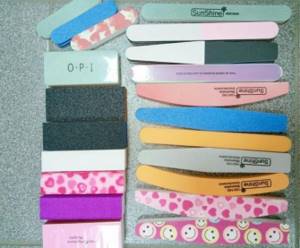
To choose a quality tool for polishing and grinding nails, you need to pay attention to the following factors:
- The material from which the buff is made. It is best to choose a material that is wear-resistant and easy to process;
- Abrasiveness. If you are going to process only natural nails, then there is no need to purchase a tool with an abrasiveness of less than 150 grit. And vice versa, if you are working with extended nails, then a buff with a hardness of more than 300 grit will simply lie idle;
- Color. Of course, the shade of the tool does not affect the functionality and result of the work, but it does improve your mood while working on your nails. Manufacturers of nail industry equipment offer a wide range of color solutions;
- Manufacturer's brand. It is best to choose tools from reliable manufacturers of quality products.
This video can help you choose tools for polishing.
Instrument care
Manicure accessories need care. Dirt and germs accumulate on them, so disinfection should not be neglected.
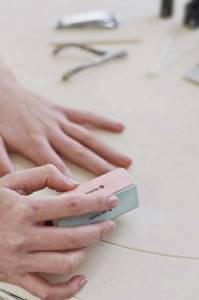
Since buffs absorb moisture well, do not apply too much product to the instrument. It is not recommended to wet the instrument; this can lead to delamination and deformation.
Review of quality brands
Let's look at some popular, proven brands that are distinguished by their quality and ease of use.
- Titania 1205B - a universal file for natural and artificial nails has three sides with different abrasiveness and for different tasks - length correction and roughening, removing grooves on the nail plate or polishing;

- Planet Nails - a four-sided buffer with varying degrees of abrasiveness will help polish, correct and level the surface of the nail. The polishing side helps give nails shine, and can be used with oil to enhance the lamination effect;
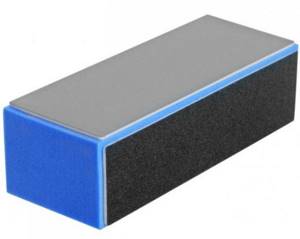
- Zinger. The BA-10 buff, like the previous one, has 4 working sides - from 180 to 3000 grit. Durable model - does not crumble or crumble for a long time;
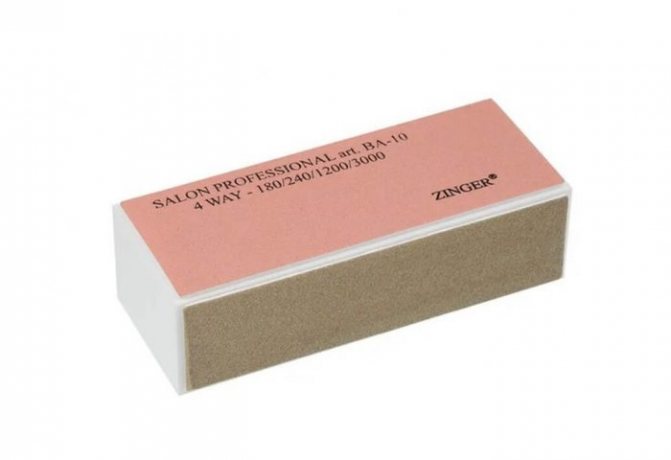
- OPI Shiner is a double-sided polisher that gives your nails a healthy shine in a short period of time without any oils;
- CND Koala – a tool with abrasiveness of 240 and 1000 grit for grinding and polishing natural nails;

- Creative Block – buffer for natural, extended nails;
- IBD Diamond – for polishing gel and acrylic nails;
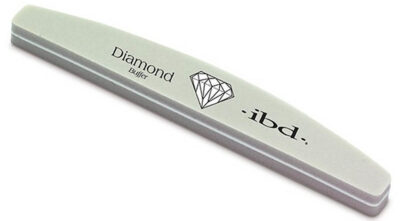
- Premier is a buff with three sides of different abrasiveness for grinding and polishing natural nails.
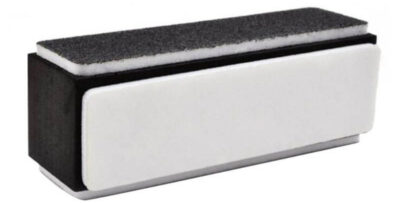
Now you know what buffs are and how to choose them.
What brand of buff do you use? We are waiting for your answer in the comments. Comment
Alternative
Buff is not sold on every shelf in every store, however, it is better to find and purchase it, since there is simply nothing to replace it. A buff and a nail file differ in the quality of processing; a simple file has a rather low quality. If, nevertheless, there is an urgent need for a manicure, but there is no buff, the solution is as follows:
- any file with an abrasiveness of more than 300 gr. can help out temporarily;
- polishing, elimination of defects and irregularities can be done with any rough material, for example a piece of rough, harsh fabric.
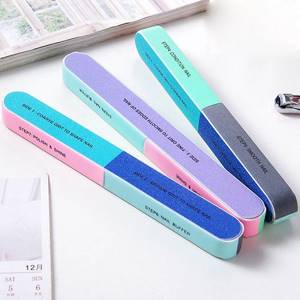
Nail file buff
Results. A good quality buff will help to thoroughly polish your nails for gel polish coating; it will lie firmly on the nail. The life of the gel polish will be significantly extended, but you need to take into account the condition of the nail plates - if they are thin, you need to choose a softer buff.
Proper wearing of the buff
You can wear the buff in 12 different ways , and it is possible that you will come up with your own. An unusual headdress for active outdoor sports is used as a pirate hat, bandana, hair tie, hat, scarf, balaclava, wristband and much more.
There are 3 buff sizes on the market - products for small athletes, teenagers and adults. The use of microfiber and other modern materials allows you to create the most comfortable conditions for wearing the product.

What is stamping
Stamping for nails is a type of decoration in which a design from a special plate is first imprinted onto a stamp, and then from it onto the nails. This trend in manicure is very popular today, especially among those who like to do manicures without outside help at home. This is due to a number of features that we will now discuss.
Advantages of stamps
The desire to get your nails done with stamping arises due to its positive qualities:
- a neat pattern with clear lines that appears uniformly on the nails;
- no need to seek help from a manicurist;
- the ability to choose the color of the design, which is not possible when applying stickers;
- the whole process takes little time, no more than a couple of minutes;
- In addition to nails, the stamping technique can even be used for drawing on other surfaces, for example, on a phone (a kind of addition to the image).
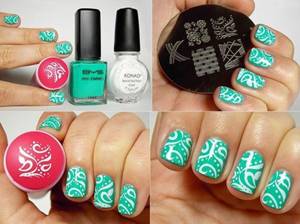
Disadvantages of stamping
It would not be amiss to mention the not-so-pleasant features of this technology:
- It is very difficult to create a nail design with a stamp the first time, and therefore ideal patterns will begin to be obtained gradually;
- not all plates are equally good for use, although they can cost a lot of money;
- Once the pattern has been transferred, it is advisable to wait a while with the top coat, because... Before the polish dries completely, there is a risk of smearing it on the nail.
Stamping on nails fails when the varnish applied to the plate dries too quickly. In such cases, it is difficult to have time to transfer the pattern to the stamp, and from it to the surface of the nail. To solve the problem, a varnish solvent is used, which is used to wipe the plate, each time before a new nail.
General recommendations
Anyone who wants to get the perfect manicure in a very short time should take the time to read some tips on how to use nail stamping:
- It is advisable to begin your interaction with stamps from other surfaces, because movements must be fast and confident, and skill comes with practice;
- It is worth developing the force of pressure on the stamp and scraper;
- if the pad on the stamp is silicone, you should lightly treat it with a buff before use, otherwise it will not completely imprint the pattern;
- each layer of varnish can be applied only after the previous one has completely dried, so that blurring does not occur;
- Transferring an image from a stamp is possible only once, i.e. for each subsequent use, all actions are repeated;
- if varnish remains on the skin, it can be easily removed with a simple toothpick;
- if necessary, you can use a dots or a thinner needle to complement the design;
- To protect the skin, any tricks for carefully applying varnish can be used - office glue, tape or a special corrector.

What is a nail primer?
Using a primer improves the adhesion of the material to the nails. Typically these products come in the form of various liquid gels and bases. In order to choose a primer, it is better to take the advice of a specialist or read the description of what a nail primer is and what types exist.
Kinds:
Acidic – most often used for application to oily and fungal-damaged nails. They are also effective when the nail plate has the shape of a springboard
When using primer, be especially careful not to allow it to come into contact with your skin. This may cause minor burns or stinging in these areas.
Acid-free is the newest type of primer, which appeared relatively recently. However, in a short time, many pedicurists and manicurists managed to appreciate it. In simple terms, the acid-free version serves as a kind of double-sided tape that allows you to attach the material to the nail. This primer is used for nails with a normal structure or with a lower oil content.
So, having figured out what a nail primer is, we can say with confidence that this product is simply necessary when creating a manicure.
The best files for natural nails
The category offers a wide selection of metal, glass and ceramic files for the care of natural nails. All accessories are of high quality, durable and tolerate various methods of disinfection.
Royal Tools file with sealing effect
5
★★★★★ editorial assessment
100% of buyers recommend this product
This innovative nail file has already captivated many manicurists. It is made of high quality steel and impact-resistant plastic. The shape is oval and slightly curved - for convenient filing of edges.
The sides have different abrasiveness: the first is suitable for length correction, the second, smoother, is for grinding and sealing the edges of the nail. The use of such an accessory stops delamination and prevents chemicals from getting inside the plate.
Pros:
- High-quality manufacturing materials;
- Comfortable handle and curved shape of the file itself;
- Hard storage case;
- Removes length and seals the edge of the nail;
- Sides with different abrasiveness.
Minuses:
It costs expensive.
The premium English brand Royal Tools produces professional manicure tools. Only high-quality materials and new technologies are used for products, thanks to which they last for years.
Zwilling JA Henckels Ceramic 88418
4.9
★★★★★ editorial assessment
95% of buyers recommend this product
A shaped nail file with a wide plastic holder is considered one of the safest. The work area is made of ceramic in the form of a rectangle. The corners are quite sharp and make it easy to trim your nails and also seal their edges.
This device can be used to treat cuticles, nail folds, and even remove hangnails. The handle has a pleasant and discreet pastel shade: blue, pink, white or blue - your choice.
Pros:
- Wide comfortable handle;
- Safe ceramic file;
- Suitable for caring for fragile, brittle nails and cuticles;
- Seals the edge;
- Lightweight and durable.
Minuses:
- The price is a bit high;
- The non-standard handle takes some getting used to.
To prevent your nails from deteriorating and peeling, you need to take proper care of them. This accessory will help you with this. Ceramics with fine and uniform grain size are safe for the health of nails, and also quickly remove length and give the desired shape.
Silver Star AT 467
4.8
★★★★★ editorial assessment
90% of buyers recommend this product
Silver Star products are no less in demand. It produces inexpensive and convenient tools, including nail files. Model AT467 is made of a ceramic bar placed in a plastic case.
On the opposite side there is a narrow pencil file for caring for the cuticle and skin around the nail. The ideal result is achieved by steaming your fingers and carefully filing.
Pros:
- Compact and convenient model;
- Ceramic base;
- Closes with a plastic cap;
- There is an ISO quality certificate;
- Does not break when dropped;
- The work area is not cut down for a long time.
Minuses:
- Over time, the mount becomes loose and the file falls out of the case;
- The cap is easily scratched.
All brand products are certified and meet European standards. The quality of the tool is excellent, but you should not be overzealous when using it, otherwise the skin will become inflamed and hangnails will appear.
Laser file Mertz 140
4.7
★★★★★ editorial assessment
87% of buyers recommend this product
The file is made of steel and has an innovative laser coating for gentle cutting. The sharp corners do an excellent job of correcting the plate in hard-to-reach places, and also serve as the prevention of ingrown toenails.
The instrument is popular among professional craftsmen and ordinary girls. It can be sterilized and treated with various chemical disinfectants. For convenience, there is a plastic handle on the edge.
Pros:
- Suitable for salon and home use;
- Quality materials;
- The right angles of the tool cope with cutting in hard-to-reach places;
- Suitable for removing cuticles;
- Sterilization allowed;
- Inexpensive.
Minuses:
- Roughly affects the nail and leaves roughness;
- No storage case.
The model is small and compact - it will easily fit in a purse or purse. But, like any manicure tool, you need to get used to it.
